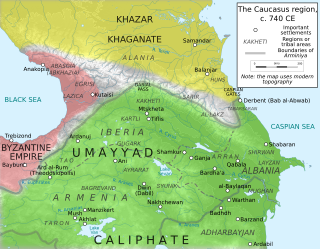 W
WThe Arab–Khazar wars were a series of conflicts fought between the armies of the Khazar Khaganate and the Rashidun, Umayyad, and Abbasid caliphates and their respective vassals. Historians usually distinguish two major periods of conflict, the First Arab–Khazar War and Second Arab–Khazar War, but the Arab–Khazar military confrontation also involved sporadic raids and isolated clashes from the middle of the 7th century to the end of the 8th century.
 W
WThe Battle of Brávellir or the Battle of Bråvalla was a legendary battle that is described in the sagas as taking place on the Brávellir between Sigurd Hring, king of Sweden and the Geats of Västergötland, and his uncle Harald Wartooth, king of Denmark and the Geats of Östergötland.
 W
WBetween 780–1180, the Byzantine Empire and the Abbasid & Fatimid caliphates in the regions of Iraq, Palestine, Syria, Anatolia and Southern Italy fought a series of wars for supremacy in the Eastern Mediterranean. After a period of indecisive and slow border warfare, a string of almost unbroken Byzantine victories in the late 10th and early 11th centuries allowed three Byzantine Emperors, namely Nikephoros II Phokas, John I Tzimiskes and finally Basil II to recapture territory lost to the Muslim conquests in the 7th century Arab–Byzantine wars under the failing Heraclian Dynasty.
 W
WThe Frisian–Frankish wars were a series of conflicts between the Frankish Empire and the Frisian kingdom in the 7th and 8th centuries.
 W
WThe history of Islam in Sicily and Southern Italy began with the first Arab settlement in Sicily, at Mazara, which was captured in 827. The subsequent rule of Sicily and Malta started in the 10th century. The Emirate of Sicily lasted from 831 until 1061, and controlled the whole island by 902. Though Sicily was the primary Muslim stronghold in Italy, some temporary footholds, the most substantial of which was the port city of Bari, were established on the mainland peninsula, especially in mainland Southern Italy, though Muslim raids, mainly those of Muhammad I ibn al-Aghlab, reached as far north as Naples, Rome and the northern region of Piedmont. The Muslim raids were part of a larger struggle for power in Italy and Europe, with Christian Byzantine, Frankish, Norman and local Italian forces also competing for control. Muslims were sometimes sought as allies by various Christian factions against other factions.
 W
WThe Muslim conquest of the Maghreb continued the century of rapid Muslim conquests following the death of Muhammad in 632 and into the Byzantine-controlled territories of Northern Africa. In a series of three stages, the conquest of the Maghreb commenced in 647 and concluded in 709 with the Byzantine Empire losing its last remaining strongholds to the then-Umayyad Caliphate under Caliph Muawiyah I.
 W
WThe Saxon Wars were the campaigns and insurrections of the thirty-three years from 772, when Charlemagne first entered Saxony with the intent to conquer, to 804, when the last rebellion of disaffected tribesmen was crushed. In all, 18 campaigns were fought, primarily in what is now northern Germany. They resulted in the incorporation of Saxony into the Frankish realm and their forcible conversion from Germanic paganism to Catholicism.
 W
WThe Third Tikal–Calakmul War was the third in a series of wars between Tikal and Calakmul, two of the Major superpowers of the Maya Civilization during the classic period.
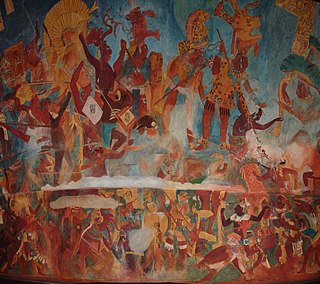 W
WThe Tikal–Calakmul wars were a series of wars, mainly between Tikal and Calakmul on the Yucatán Peninsula, but also with vassal states in the Petén Basin such as Copan, Dos Pilas, Naranjo, Sacul, Quiriguá, and briefly Yaxchilan had a role in initiating the first war.
 W
WThe Tripartite Struggle for control of northern India took place in the ninth century. The struggle was between the Pratihara Empire, the Pala Empire and the Rashtrakuta Empire.
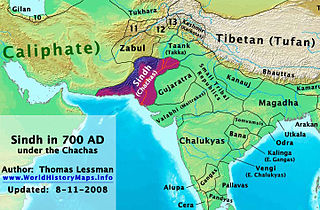 W
WIn the first half of the 8th century CE, a series of battles took place between the Umayyad Caliphate and the Indian kingdoms to the east of the Indus river.
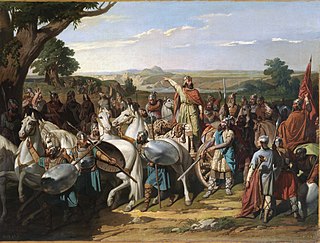 W
WThe Umayyad conquest of Hispania, also known as the Muslim conquest of the Iberian Peninsula or the Umayyad conquest of the Visigothic Kingdom, was the initial expansion of the Umayyad Caliphate over Hispania from 711 to 788. The conquest resulted in the destruction of the Visigothic Kingdom and the establishment of the Umayyad wilaya of Al-Andalus. The conquest marks the westernmost expansion of both the Umayyad Caliphate and Muslim rule into Europe.
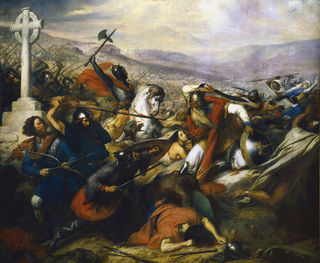 W
WThe Umayyad invasion of Gaul occurred in two phases in 720 and 732. Although the Muslim Umayyads secured control of Septimania, their incursions beyond this into the Loire and Rhône valleys failed. By 759 they had lost Septimania to the Christian Franks.